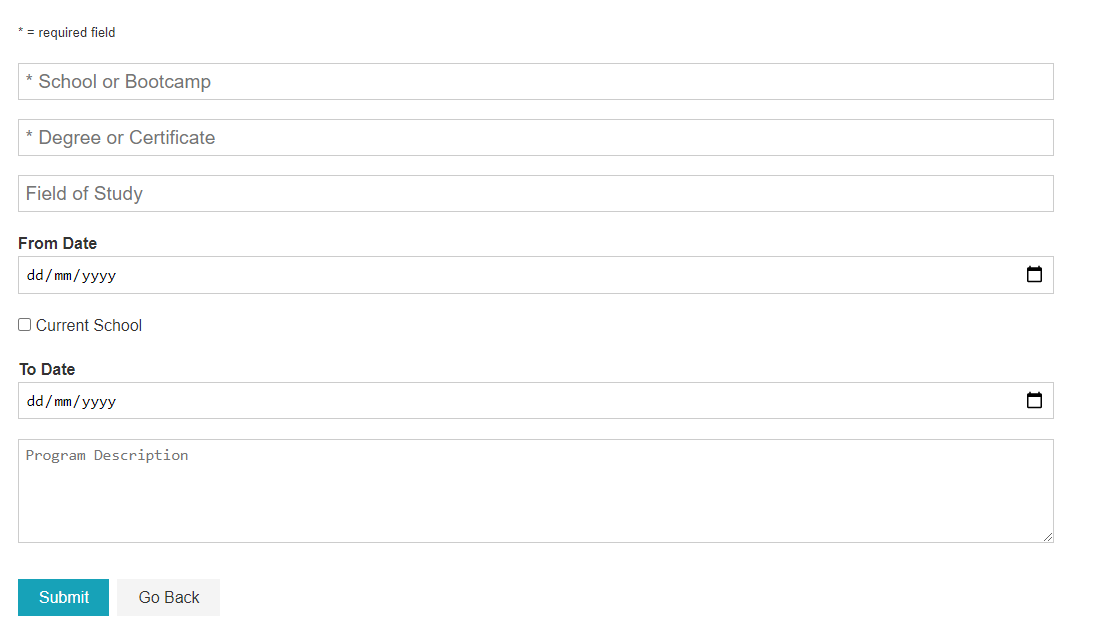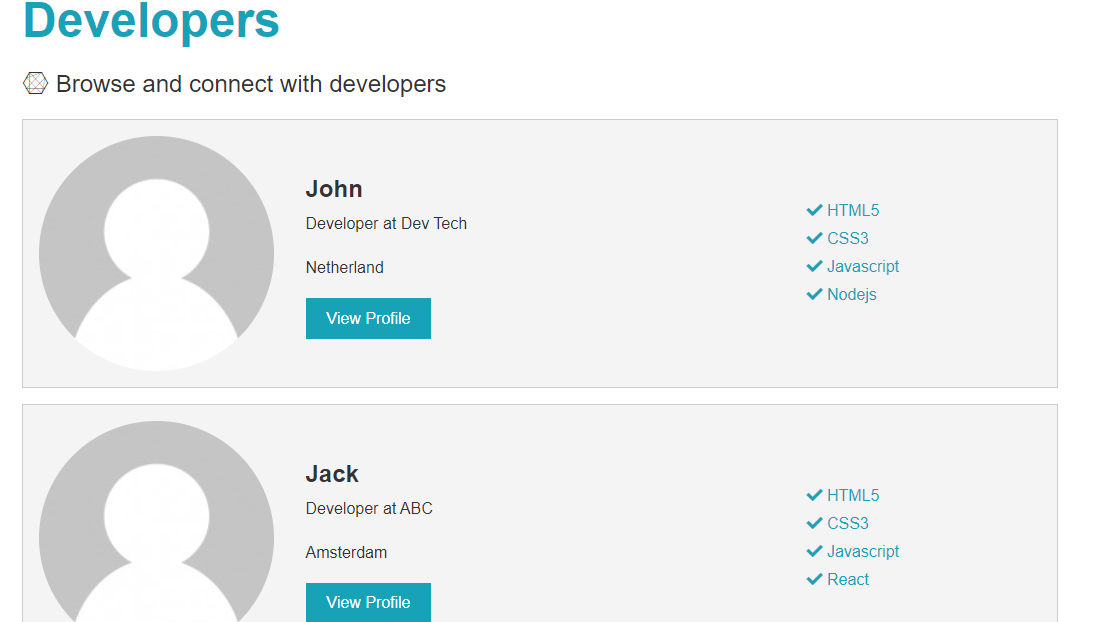Best practices to learn React - Redux - Node.js.
- Database
We are using MongoDb Atlas but you can also choose local database integration. You need MongoDb Connection String to connect your cluster.
- Github Token
This is for listing user's repos. Follow these instructions to access it.
- Deployment
Heroku account
- Make sure you have installed
Node.jsandnpm.
git clone https://github.com/mejustdev/Project-Social-Network.git
cd Project-Social-Network
# Install server dependencies
npm install
# Install client dependencies
cd client
npm installCreate default.json file in config folder and paste your credentials
💥 Do not forget to add this file to the
.gitignore.
# config/default.json
{
"mongoURI": "",
"jwtSecret": "",
"githubToken": ""
}# Run both Express & React from
npm run dev
cd client
npm run build
Create your repository on Github. Then use Git Flow and finally push it to the remote
git add .
git commit -m "initializing project"
git push origin mainAfter running a build in the client 👆, cd into the root of the project
And run...
Linux/Unix
NODE_ENV=production node server.jsWindows Cmd Prompt or Powershell
$env:NODE_ENV="production"
node server.jsCheck in browser on http://localhost:5000/
git checkout -b productionWe can use this branch to deploy from, with our config files.
Add the config file
git add -f config/production.jsonThis will track the file in git on this branch only. DON'T PUSH THE PRODUCTION BRANCH TO GITHUB
Commit...
git commit -m 'ready to deploy'Create your Heroku project
heroku createAnd push the local production branch to the remote heroku main branch.
git push heroku production:mainNow Heroku will have the config it needs to build the project.
Don't forget to make sure your production database is not whitelisted in MongoDB Atlas, otherwise the database connection will fail and your app will crash.
After deployment you can delete the production branch if you like.
git checkout main
git branch -D productionOr you can leave it to merge and push updates from another branch. Make any changes you need on your main branch and merge those into your production branch
git checkout production
git merge mainOnce merged you can push to heroku as above and your site will rebuild and be updated
- Building an extensive backend API with Node.js & Express
- Complete User Authentication (Login / Signup)
- Authorization
- Using Redux for app state management
- Protecting routes/endpoints with JWT (JSON Web Tokens)
- Responsive + Mobile-First Design
- App Deployment with Heroku
- React Hooks throughout the entire App
- Next.js API Routes
- User authentication with JWT and Cookies
- Password hashing with bcrypt
- Modeling database content with Mongoose Schemas
- Managing MongoDB database with the Atlas Interface
- App Deployment with Deployment Service Heroku
- Protecting private client routes with React
- Securing private data with environment variables
- Validating Requests in Node / Express Apps
"If you'd like to contribute, please fork the repository and use a feature branch. Pull requests are warmly welcome"
- Project homepage: https://net-werk.herokuapp.com/
- Repository: https://github.com/mejustdev/Project-Social-Network
- Issue tracker: https://github.com/mejustdev/Project-Social-Network/issues
- In case of sensitive bugs like security vulnerabilities, please contact mejustdev@gmail.com directly instead of using issue tracker. I value your effort to improve the security and privacy of this project!
"The code in this project is licensed under MIT license."





